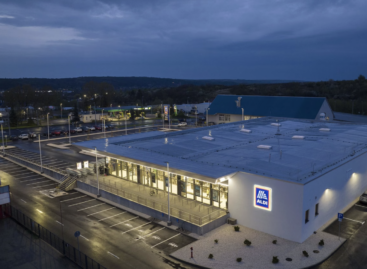Domestic beer consumption is drastically decreasing
Serious changes can be observed in the domestic beer market: although the decrease in consumption does not spare this sector either, there is an increasing demand for quality beers. This is particularly beneficial for small-scale, or otherwise known as craft breweries, which are becoming more and more popular among the population. The Extended Producer Responsibility System (EPR) introduced last year, as well as the Mandatory Redemption System (DRS), which came into effect this July, caused serious difficulties for breweries. However, the sector actors interviewed by the Agricultural Sector typically spoke positively about their situation and expect an upswing in consumption in the remainder of the summer period.
Development of beer consumption in Hungary

While 105 liters of beer were consumed per person in Hungary in 1990, this had fallen to 59 liters by 2014. However, a technological and quality revolution took place in the industry, so beer consumption has since risen to 68 liters per person. In recent years, however, growth has stalled as a result of the coronavirus epidemic. According to data from the Association of Hungarian Brewers, domestic beer consumption was just over 5.4 million hectoliters in 2023, which represented a 10% drop compared to the 6.01 million hectoliters measured in 2022. This year, however, it may be possible to make up for part of this backlog, but in the long term, experts expect a trend-like decrease in beer consumption in parallel with the decline in alcohol consumption.
Craft Breweries: Growth and Challenges
The segment of craft and small-scale breweries may experience a certain level of growth, although they have been hit harder by recent cost increases – raw material prices, energy prices, wage costs. The extended producer responsibility and the mandatory redemption system caused serious administrative and cost difficulties, which they could not, or only partially, enforce in their prices. The festival season and sports events do not mean an absolute increase in sales either, since these breweries do not basically aim for high-volume sales, rather they are based on cultured beer consumption and customers receptive to specialties.
Related news
MOHU is preparing for post-holiday redemption with increased capacity
🎧 Hallgasd a cikket: Lejátszás Szünet Folytatás Leállítás Nyelv: Auto…
Read more >Opportunity to purchase new land
🎧 Hallgasd a cikket: Lejátszás Szünet Folytatás Leállítás Nyelv: Auto…
Read more >Related news
Pre-holiday shopping at up to half price
🎧 Hallgasd a cikket: Lejátszás Szünet Folytatás Leállítás Nyelv: Auto…
Read more >Samsung washing machines receive carbon footprint reduction certification under the DUCD regulation
🎧 Hallgasd a cikket: Lejátszás Szünet Folytatás Leállítás Nyelv: Auto…
Read more >Extended holiday opening hours at MediaMarkt
🎧 Hallgasd a cikket: Lejátszás Szünet Folytatás Leállítás Nyelv: Auto…
Read more >






